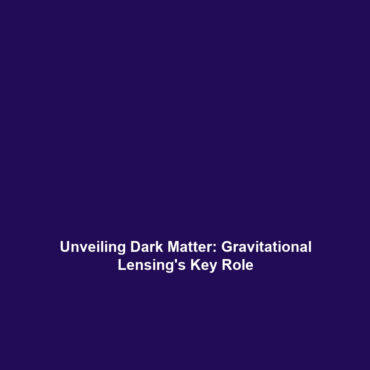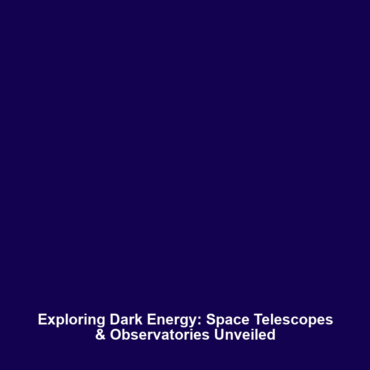The Role of Gravitational Lensing in Mapping Dark Matter
Introduction: Gravitational lensing is a pivotal tool in the field of cosmology, particularly in understanding dark matter and dark energy. By bending light from distant galaxies, this powerful phenomenon aids astronomers in mapping the elusive dark matter that constitutes a significant portion of the universe’s mass. As a result, gravitational lensing not only enhances our comprehension of dark matter but also enriches our knowledge of dark energy, making it essential in contemporary astrophysical research.
Key Concepts
Gravitational lensing occurs when a massive object, such as a galaxy cluster, distorts the path of light from a more distant object. This effect provides a method of detecting and quantifying dark matter through several key principles:
- Strong Lensing: Occurs when the lensing object is directly aligned with the source, resulting in multiple images of the same galaxy.
- Weak Lensing: Produces subtle distortions in the shapes of distant galaxies, allowing for statistical analyses of dark matter distribution.
- Microlensing: Happens when a compact object, like a black hole, passes in front of a distant star, temporarily magnifying its brightness.
These concepts illustrate how gravitational lensing serves as a beacon for mapping dark matter, linking it directly to the broader themes of dark matter and dark energy.
Applications and Real-World Uses
The applications of gravitational lensing in mapping dark matter are vast and varied, particularly within dark matter and dark energy research. Some significant uses include:
- Galaxy Cluster Studies: Lensing helps measure the mass of galaxy clusters, providing insights into the atmospheric properties of dark matter.
- Understanding Dark Energy: By investigating lensing effects, scientists can explore the expansion rate of the universe influenced by dark energy.
- Exoplanet Detection: Gravitational microlensing can reveal the presence of exoplanets by observing anomalous brightness in distant stars.
These examples underscore how gravitational lensing is used effectively in the study of dark matter and dark energy.
Current Challenges
Despite its advantages, the study of gravitational lensing presents several challenges:
- Data Interpretation: Analyzing lensing data requires sophisticated models that can satisfyingly explain the observed phenomena.
- Mass Models: Reliably estimating the mass distributions of lensing galaxies to provide accurate dark matter mappings remains complex.
- Background Noise: Separating lensing signals from other astrophysical processes can be difficult, complicating analysis.
Addressing these challenges is crucial for advancing our understanding of gravitational lensing and dark matter.
Future Research and Innovations
The future of gravitational lensing research promises innovative breakthroughs aimed at enhancing our grasp of dark matter and dark energy. Ongoing projects, such as the James Webb Space Telescope and the Vera C. Rubin Observatory, are set to significantly advance our observational capabilities. They are expected to provide:
- Higher Resolution Data: Enabling more precise modeling of lensing effects and refined maps of dark matter.
- Expanded Cosmic Surveys: Facilitating large-scale investigations that will uncover new gravitational lensing events.
- Next-Gen Simulation Techniques: Improving predictions of galaxy formation and evolution influenced by dark matter.
Conclusion
In summary, gravitational lensing plays a critical role in mapping dark matter, contributing to our broader understanding of cosmic structures. This relationship between gravitational lensing and dark matter and dark energy showcases the interconnectedness of these cosmic phenomena. As research progresses, we anticipate improved insights that will deepen our understanding of the universe. For further reading, explore related topics such as dark energy and latest dark matter research initiatives.





